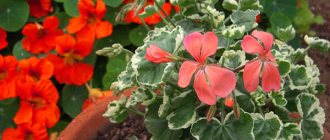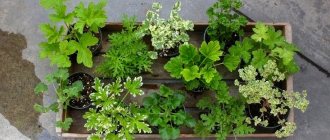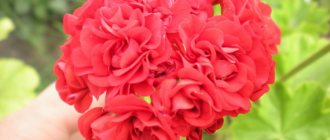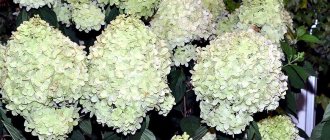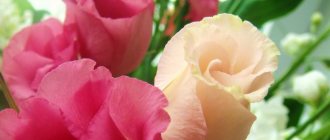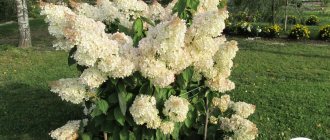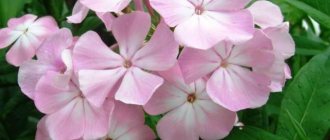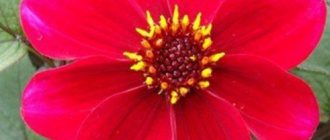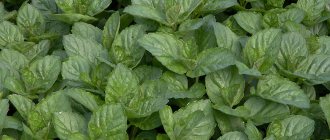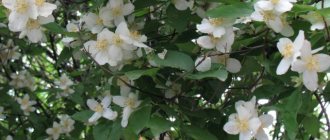The scented rose geranium takes its name from the genus Pelargonium, which comes from the Greek word pelargos, meaning stork. Because the shape of the fruit looks like a stork's beak. Pelargoniums are called "storkbills" in some areas of the United States. The species name "Graveolens" means "strong sense of smell" in Latin, referring to the strong aroma of the leaves. This species has many hybrids and cultivars that have been developed to take advantage of this strong aroma.
What you need to know about geranium?
Basic requirements for long flowering geraniums:
- It can bloom all summer and autumn until winter if the flowerpot with it is placed on a window on the south side
- Loves direct sunlight
- In summer, geranium grows well and blooms at room temperature, in winter it has a dormant period, at this time we water it rarely and keep it in a cool place with a temperature of about 15 degrees Celsius
- In summer, water geraniums abundantly and often, as soon as the soil dries on top.
- We feed the flower once every 2 weeks with complex mineral fertilizer for flowering, starting from the end of March and ending in mid-November
- In autumn we prune the plant, leaving shoots with 6-7 leaves
- For abundant flowering in spring and summer, pinch out young shoots after 4-5 leaves have grown
- Geranium can reproduce by shoots and seeds
Attention: You can prepare geraniums for flowering when there is a lot of sunlight, at least 4-6 hours a day.
Planting instructions
Pelargoniums are southern plants, accustomed to drought and scorching sun rays. It is not surprising that they suffer most from excess moisture and stagnation of water. Therefore, it is necessary to provide the plants with good drainage and light, loose soil.
Instructions for planting pelargonium:
- Approximately 2-3 cm of fine expanded clay is poured onto the bottom of the pot.
- Pre-prepared soil is poured on top.
- The germinated cuttings are planted.
- It is advisable to take a tight pot to ensure abundant flowering.
- Cover the top with a clear jar to maintain humidity levels.
Flowering geranium
Geranium bordered or zoned
This variety of geranium is the most popular in the world. The plant got its name because in the middle of its leaves there is a peculiar border of brownish color. Flowers are usually two-colored and can be of the following forms:
- With 5 petals - simple
- With 6-8 petals - semi-double
- If a flower has 8 petals or more it is called double
If zonal geranium is not pinched, it can grow up to 1 m. A special feature of zonal geranium is its round inflorescences, usually protruding above the leaves.
Note. Only zonal geranium loves very bright light; other types of geranium can grow in partial shade.
Geranium zonal terry
Geranium in the form of roses
The double flowers of this geranium look like small roses. There are up to 20 of them in one inflorescence. The petals are one-color or two colors, their outer side is lighter.
Geranium in the form of roses
Geranium in the form of tulips
The flowers (1.5 cm in diameter) of this species resemble tulips that have not yet bloomed. They remain half-closed until the end of flowering. There are up to 40 flowers in one inflorescence. The flowers are pink or red, sometimes white, but rarely.
Geranium in the form of unopened tulips
Geranium unique
Geranium has strongly dissected leaves that have a faint odor. Can grow 1 m or more. Stems are woody. They bear small red flowers, less often pink or white, with dark veins or spots on the petals, like royal geraniums. The petals become lighter towards the middle.
Geranium unique
Geranium angel
This geranium grows in bushes up to 35 cm, no more. The flowers are small, usually two-colored, like pansies. The upper petals on the flower are larger than the lower ones. Geranium comes in a wide variety of shades.
Angel geranium is unpretentious and can grow in both sunny and shaded places. Where there is little light, a pot of geranium is hung and the flower is grown hanging down. And if there is a lot of sun, then the geranium bush grows upward and blooms profusely.
Attention. Geraniums of the “angel” and “royal” varieties are afraid of small white moths - whiteflies that infect them.
Angel Geranium
Royal Geranium
Geranium was called royal because of its beautiful large flowers (5-7 cm in diameter). The flowers are usually multicolored and come in the following colors:
- Darker or lighter in the middle
- Speckled
- Spotted or streaked
Geranium petals overlap each other like a fan.
The edges of the petals are:
- Simple
- Wavy
- Corrugated
The bushes are small in height - 30-60 cm. The leaves have serrations and are odorless. Royal geranium blooms less than other geraniums - 3-4 months. It is also more capricious - it grows only as an indoor flower, but dies in the open air.
Botanical description, origin and price
The main difference between pelargoniums is the unusual shape of the flower, the petals of which have only a longitudinal axis of symmetry. The two upper petals are located separately and often grow together. The remaining three lower petals are evenly spaced relative to each other. In nature, the flowers are simple, but hybrids have flowers of varying degrees of fullness and shape. For example, tulip-shaped, carnation-shaped or rosebud-shaped, similar to smaller copies of tulips, roses and carnations. Flowers are collected together in the form of lush umbrella inflorescences.
The shape of pelargonium leaves is usually ivy-shaped or rounded with a jagged edge. Less common are species with dissected, fern-like leaves. The color of the leaves can be not only one-color, but also two- and three-color.
The vast majority of pelargonium species are native to the Cape Province of South Africa. The story of how the first species of pelargonium came to Europe is interesting. The fact is that in the 17th century, the Cape of Good Hope in South Africa served as a transit point on the way to India. The Dutch doctors who accompanied the crew were knowledgeable in botany and brought home unusual tropical plants. And already from Holland, pelargoniums spread to all the rich houses of Europe.
Most often, pelargoniums can be purchased in garden stores:
- In the form of seeds (a bag does not cost more than 100 rubles).
- Rooted cuttings (100-200 rubles).
- Flowering plant in a pot (from 300 rubles).
The more popular the pelargonium variety and the more unpretentious it is, the cheaper it is. But for rare and unusual varieties of adult plants, the price reaches 3,000 rubles and more.
Video: Royal geranium of unusual colors
Geranium variegated
Geranium is valued for its beautiful leaves:
- White or brownish spots on a green leaf
- On a green leaf there is a border of a different color
- The leaf has veins of a different color
- Round or openwork
- Tricolor
Geranium of this variety blooms very rarely, and some varieties do not bloom at all.
Attention. To preserve the decorative appearance of the leaves of variegated geraniums, a lot of sun is required in summer, and in winter you will have to additionally illuminate the place with flowers.
Geranium variegated
Geranium cactus
Cactus geranium flowers have elongated, sometimes needle-shaped or curled petals. They can be one color or several. This type of geranium is rare.
Geranium cactus
Geranium ivy-leaved
The leaf shape of this geranium is similar to ivy leaves. Just like ivy, ivy-leaved geranium falls with its leaves and flowers downwards. Can grow up to 1 m in length. The leaves are smooth, glossy, monochromatic, sometimes variegated, looking like artificial flowers. Geranium flowers are up to 5 cm in diameter, with 5 or more petals.
Geranium ivy-leaved
Geranium dwarf
The height of geranium is 12-30 cm. It blooms profusely. There is no need to pinch the shoots; the geranium itself forms a neat bush.
Geranium dwarf
Diseases and pests
The most dangerous disease for Pelargonium is rotting of the rhizomes and stems. Most often this happens due to constant waterlogging of the soil. You can notice rot by the softened parts of the plant. In this case, you need to immediately treat the entire plant with antifungal drugs, and treat not only the flower itself, but also the soil in which it grows.
Important! Such pelargonium should never be taken from cuttings.
Sometimes the plant is attacked by gray rot, its negative impact is directed at the leaves and buds. In this case, Pelargonium is isolated from other flowers and sprayed with fungicidal agents. Treatment is carried out a couple of times with a break of a week. Don't forget to get rid of the affected areas of the plant.
Aphids, mites and powdery mildew must be controlled using Bordeaux mixture or insecticides. Whiteflies and caterpillars attack Pelargonium much less frequently. In this case, use potassium soda.
Varieties of fragrant geraniums
There are now up to 150 varieties of fragrant geranium. Geranium leaves have the following odors:
- Fruits (apples, peaches)
- Tropical fruits (lemon, pineapple, orange)
- Berries (strawberries, wild strawberries - Lady Scarborough variety)
- Flowers (roses, lavender, lily of the valley, wormwood)
- Spices (nutmeg, ginger, cinnamon)
- Candy (caramel)
- chocolate
- Coconut (Grossularioides variety)
- Mint
- Evergreens (pine, cedar, juniper)
- Almond
- Coca-Cola (Dorcas Brigham Lime variety)
- Menthol (Dark Lady variety)
- Balsam
- Men's perfume with a hint of tobacco (Brilliantine variety)
For fragrant geraniums, the main thing is the leaves. They are used as a natural flavor for tea, cosmetics and perfumes. Its flowers are usually inconspicuous, and some varieties bloom very rarely.
Features of reproduction
Most often, pelargonium is propagated vegetatively:
- cuttings;
- leaf plate;
- fragment of a leaf.
Leaf blade and leaf fragment
The processes are generally similar:
- A leaf with a petiole, without a petiole, with the central vein removed, or triangular fragments of a leaf is taken. All cuts are made with a sharply sharpened knife so as not to crumple the tissue and cause less damage to the seedling material.
- To avoid infection and rot, fresh sections are treated with ash, activated carbon or a growth stimulant.
- The cuts are deepened in the soil and covered with a transparent jar on top until new leaves appear.
Seeds
Vegetative propagation of pelargonium is more reliable and preserves the varietal characteristics of the plant, but you cannot do without seeds to obtain hybrids or when delivering the treasured variety by mail.
- The seeds are poured onto the prepared soil, without being covered with soil.
- Cover the top with glass to maintain humidity and wait a month until shoots appear.
By cuttings
For productive propagation by cuttings, the mother plant is intensively fed and given additional lighting for a month or two.- Then, after a sufficient number of new branches with leaf buds appear, the cuttings are cut with a sharp knife. They don’t have to be from the top of the branch, they can be from the middle, but each cutting should have 2-3 leaf buds.
- The cuttings are either placed in water until the roots appear, or, after treating them with a growth stimulant, they are immediately planted in the soil.
Although the process of successful propagation of pelargonium by seeds is lower than that of the vegetative method, nevertheless, the resulting plants are distinguished by more lush and abundant flowering.
There is a wide variety of pelargoniums, namely Clara Sun, Denise, Norland, Rococo, Anita, Stellar, Millfield Rose, Pak Salmon Comtesse, Angel, April Snow.
Pelargonium varieties Pink are female flowers. By giving a living Pink pelargonium flower to a girl or lady, you will emphasize her feminine character, tenderness and romance.
Video: Fragrant pelargonium: varieties, varieties, aromas
Most fragrant or most fragrant geranium
The round, slightly dissected leaves of this plant have an apple scent. It grows as a small spreading bush.
Geranium is the most fragrant
Geranium, scented or aromatic
The greyish-green, heavily lobed leaves of the plant have a rose scent along with a faint aroma of mint. The plant itself is branched, grows up to 30-60 cm in height, with bright pink flowers.
In addition to the main species, there are also subspecies that are classified as aromatic geranium:
- Geranium with leaves that smell strongly of mint and camphor
- Geranium with leaves, with a lighter border, the smell of eucalyptus, blooms with lilac-pink flowers
Geranium aromatica
Geranium capitata
Heart-shaped leaves, pubescent, strongly dissected, with a rich rose scent. The plant grows up to 60 cm in height. The flowers are small lilac-pink, burgundy at the base.
Geranium capitata
Geranium pink
This geranium can grow one and a half meters in height. It smells like roses with the addition of a subtle lemon scent. It grows like a shrub and blooms with pink flowers. Its leaves are strongly dissected into narrow strips.
In addition, rose geranium includes the following subspecies of geranium:
- With palmately dissected leaves, this geranium is also called "Crow's feet", with brighter colors than the main type of rose geranium.
- With even more rugged leaves than the main rose geranium and lilac-pink flowers
Geranium pink "Crow's feet"
Geranium rough
The leaves of rough geranium look very tough, but it destroys viruses better than all fragrant geraniums.
Geranium rough
Geranium curly
The leaves of curly geranium are small, round, dissected, with a golden edge, and have a citrus scent. The flowers are light pink, with burgundy lines on the petals at the base.
Attention. Curly geranium contains a lot of vitamin C, as well as substances such as apigenin and chrysin, which suppress the growth of cancerous tumors. Its leaves are brewed as tea and added to soups, desserts and baked goods.
Geranium curly
Geranium felt
The plant grows small, up to 30 cm tall, new shoots droop slightly. The leaves are medium-sized and large, round, half dissected into 3-5 lobes, pubescent, with a mint scent. The flowers are small, slightly pink with purple pistils, with purple spots on the petals the same color as the pistils.
Felt geranium
Geranium oakleaf
This geranium has large, dissected into 5-7 lobes, sticky leaves, with a balsamic scent and a light vanilla aroma. The plant grows up to 1 m. The inflorescence contains up to 10 pink flowers. Light petals have darker strokes.
Geranium oakleaf
Geranium fragrant
The plant has small, velvety, dull green leaves with a scent reminiscent of cinnamon. It blooms with white flowers, with crimson spots on the upper petals.
Geranium fragrant
Chocolate geranium
Chocolate geranium leaves are large, similar to maple leaves, with a large brown spot in the middle of the leaf. They smell like chocolate and mint. The plant can be planted in hanging pots and shaped so that it grows in a cascade.
Chocolate geranium
Varieties with photos
Below you can find descriptions and photos of popular varieties of pelargonium.
Chart
This variety belongs to the ivy-leaved species due to the shape of its leaf blades. The second name for ivy-leaved plants is shield (or Ivy). In appearance, the leaves resemble maple leaves, but Pelargonium has smoother, pentagonal leaves.
The leaf blades are covered with a waxy coating on top; they are very dense, fleshy to the touch, and glossy in appearance. Very often, thanks to this type of leaves (especially its glossiness), passers-by mistake Pelargonium for an artificial plant. The shade of the leaves is light green, but very bright and rich.
Pelargonium Pink is an ampelous flower; its stems are very thin and long. Therefore, Pink is ideal for growing on balconies, in gazebos, and also in hanging flowerpots.
The buds are a rich crimson hue. They stand out very brightly against the background of the rest of the light green part of the plant. The size of the flowers is very large. The petals of the buds are very terry, located close to each other, so from a distance they resemble peonies. The petals on the reverse side are much paler, so it seems that there is a lining underneath the flowers. All this together creates a shimmering effect.
Pandora
The flowers of this variety are very simple in appearance and touch. They don't stand out as anything special. However, what is notable is the shape in which all the buds are collected. They look like a tulip, not even just one tulip, but a bouquet of miniature flowers, and some compare this inflorescence to a glass.
Reference! Pandora's stem is branched, so you need to pinch it as often as possible. In this case, there will be many times more flowers on the plant.
The leaf blades resemble oyster shells - they are semicircular with small notches. The color of the leaves is green and bright, but with a lack of light, white veins begin to appear. Pandora has a very interesting reaction to hot climates - it produces not pink flowers, but light red ones.
Pink
This variety cannot boast of an unusual shade of buds or any unique structure, but Pink is famous for its unique aroma, which it emits almost constantly.
It is from this species that essential oil is obtained, which is subsequently used in the manufacture of cosmetics, in particular perfumes. The most active use of Pelargonium Rosea essential oil is in France, the world capital of perfumery.
What are the benefits of fragrant geranium?
Fragrant geranium contains about 120 useful components: organic acids, flavonoids, but the main ones are terpenoids. Essential oil of fragrant geranium is capable of:
- Increase the performance of the brain system
- Effective when applied to wounds, burns, frostbite, rinsing for stomatitis, dripping into the nose for sinusitis
- Stimulate the pancreas and liver
- It can help if you lubricate sore spots with acne and dermatitis.
- Together with warming ointments, improve the condition of arthritis and myositis
- If you drop a few drops of essential oil into an aroma lamp, it can soothe headaches and nerves due to nervous disorders, improve sleep, and lower blood pressure
- Rose geranium can improve the functioning of the endocrine system
- Useful for diabetics
Example. Essential oils of some varieties of fragrant geranium act on pathogenic microbes 6.5 times stronger than the strong antiseptic carbolic acid.
Properties
Geranium contains geranium essential oil. The oil is transparent, yellow with the smell of rose, mixed with the smell of geranium, it contains the alcohols geraniol and centronellol, citral, linalol, menthol, etc. The more centronellol in geranium, the higher its value. Geranium oil is used in perfumery, for the manufacture of perfumes, colognes, creams, toilet soap, as well as in the food industry for confectionery products. It is also of great importance in the field of medicine. When mixed with other substances, it replaces expensive rose oil. To obtain geranium oil, leaves and stems are steam distilled in essential oil plants.
What diseases does fragrant geranium help with?
All varieties of fragrant geranium are medicinal. The leaves of fragrant geranium are the most medicinal; the roots, branches and flowers are less useful. People use them to prepare healing potions:
- Decoction. Helps with insomnia, nervous disorders and digestive problems.
For the decoction: 1 tbsp. l. Pour dried geranium leaves into 1 glass of boiling water, let it boil, leave for half an hour. We drink 1 tbsp. l. 3 r. per day, during meals.
- Infusion. An infusion of fragrant geranium heals wounds on the skin, in the mouth, and relieves inflammation of the eyes.
Infusion for rinsing: pick 10 geranium leaves, chop them finely, pour 1 glass of cold but boiled water, add 1 tsp. honey, leave for 8 hours.
To stop persistent diarrhea for a long time, prepare an infusion for oral administration: 2 tbsp. l. crushed geranium leaves, pour 0.5 liters of boiled cold water, leave for 8 hours. We drink small sips throughout the day.
Tincture. We wash wounds with tincture of fragrant geranium, gargle and gargle for colds, drink 0.5 tsp. 2 r. per day for insomnia.
We make the tincture like this: chop the fresh leaves, you need 3 tbsp. l., pour 0.5 cups of alcohol into the leaves, leave in the cupboard at room temperature for 7 days.
- Fresh leaves. Fragrant geranium leaves can reduce high blood pressure if crushed and smelled. For the same purpose, you can drip a crushed geranium leaf onto a handkerchief.
A geranium leaf will help cure hemorrhoids if you knead it and apply it to the sore spot.
Lighting, location and soil
Pelargonium is a very light-loving plant and with a lack of lighting it stops producing essential oils, grows poorly, flowers bloom small, and the total number of inflorescences decreases. She needs to provide sufficient lighting by placing the plant towards south and south-west windows. The daylight hours of pelargonium last for at least 16 hours; if necessary, it can be extended with phytolamps and fluorescent lamps.
This southern lady likes fertile but light soil with good drainage, as when water stagnates in the soil, it is immediately affected by root rot. When preparing a soil mixture for pelargonium, it is advisable to add sand and peat. It prefers neutral and alkaline soils; it is advisable to neutralize the acidic reaction of the soil with lime.
Contraindications to taking fragrant geranium products
Fragrant geranium has many positive qualities, but there are also negative ones.
Who should not take folk medicine from fragrant geranium?
- People with high blood viscosity
- People with low blood pressure
- Children under 12 years old
- Pregnant women
- Women who are breastfeeding
- For people of old age
- People with chronic diseases of the stomach, liver, and kidneys during exacerbation
- For varicose veins
- People with bronchial asthma
- For people with individual intolerance to the smell of fragrant geranium
If you buy fragrant geranium and place it on the window in your room, it will kill all harmful microorganisms and you will get sick less. Beautifully flowering geraniums do not have medicinal properties, but they bloom very beautifully.
How to care for a flower?
Optimal conditions for the growth and flowering of pelargonium:
- Intense sunlight (at least 16 hours).
- Abundance of heat, the most favorable temperature is 25–27°C.
- Dry air, humidity no more than 60%.
- Fertile light soil.
- Moderate watering once a week.
- Does not like waterlogged soil, especially in winter.
- Fertilize in the summer during the growing season.
- Pelargoniums bloom longer in a cramped pot.
Once a month, pelargonium is fed with mineral fertilizers containing nitrogen.
Video: Geranium will bloom magnificently all year round
We recommend reading:
- What indoor flowers should be in every house or apartment?
- How to feed indoor flowers with hydrogen peroxide
- The most beautiful flowers in the world: names, photos
- Auspicious flowers for the bedroom
- What unpretentious flowers to plant on the balcony on the south and north sides
Description
Geranium belongs to the perennial plants of the geranium family Pelargonium. Its origins begin in South Africa, where it is home. There are species that resemble a shrub, and there are species that resemble a herbaceous plant. At home, geranium grows no more than 1 m.
It is more common with straight stems, but there are plant species that grow as branches or creeping shoots. The leaves are wide and curly with a finger-shaped structure. Dissected leaves are considered common.
The color of the leaves is of a uniform and zonal type. In the second case, the color transition occurs from bright to darker, green color. Switching to the description of the flower, it is necessary to mention that they come in a variety of shades.
Indoor plants only lack the blue tint of flowers, but the rest are all present.
The plant produces inflorescences of different shapes. Indoor geranium flowers can be divided into two groups:
- varieties with bright and beautiful flowers;
- inexpressive colors, but fragrant and aromatic leaves.
The flowering period of Pelargonium, if the right amount of heat is maintained, can last almost a year, from spring to autumn.
Due to its composition, geranium has beneficial properties and exhibits a healing effect.
Pelargonium and geranium - the same thing or not
Pelargonium and geranium are very similar in appearance. However, they have differences:
- they cannot be crossed because they are genetically different;
- geranium comes from the northern regions, so it tolerates frost well;
- pelargonium is an inhabitant of southern countries; in winter it should be kept in a greenhouse or at home;
- Pelargonium is grown on balconies, geranium can feel great in the garden, that’s the difference.
The unpretentiousness of geranium and its high decorative qualities have led to the wide distribution of the plant among flower growers. Properly selected conditions for its growth make it possible to enjoy beautiful and long-lasting flowering.
Signs and superstitions
Several folk beliefs are associated with geranium:
- If pink geranium blooms in the house, it means that one of the household members will soon find love or get engaged.
- Geranium has a calming effect on the nervous system, relieves stress, removes excess irritability, and relieves insomnia. It is very useful for people whose work involves nervous overload.
- Feng Shui says that if a geranium blooms, it means it has removed all the negative energy from the house.
- According to popular belief, pelargonium has a way of attracting love. A girl can carry a bag of dried flowers with her to attract the attention of the man she likes.
- This flower also has money magic, attracting money to its owner’s house. You can put a dried leaf or flower of a plant in your wallet.
- If you place white geranium in the office, it will attract clients and business partners. Before concluding an important deal, rub the leaf of the plant and inhale the tart aroma.
- If you notice that you are often overcome by laziness, which prevents you from doing necessary things, buy pelargonium of any color - it will infuse you with energy for new beginnings.
Geranium also knows how to listen, like the most attentive interlocutor. If you tell her about your problems, she helps you calm down and make the right decisions.
Is it possible to keep geraniums in the house?
Geranium carries exclusively positive energy, so growing it at home is possible and even desirable. You may come across the opinion that pelargonium symbolizes loneliness, so there is no need to keep it in the apartment, but these statements are not based on anything. This plant can protect the family from envy, damage and slander, and to enhance this effect, it is recommended to always carry a bottle of geranium oil with you.
Important! If there are people in the house who are prone to allergic reactions, geranium can cause allergies, this is especially true for white varieties.
The presence of this plant has a beneficial effect on the emotional atmosphere of the home, preventing quarrels and conflicts, which is why it is sometimes called a family psychologist. Geraniums with red flowers cope best with this. This rule applies not only to adults, but also to children: if children are in conflict with each other, geranium helps channel their energy into a creative direction.
Geraniums can often be seen on window sills in schools and other educational institutions. It helps students focus on the learning process and calms even the most restless children. Teachers who grow geraniums on windowsills note not only their students’ academic success, but also their exemplary behavior. When grown in the office, pelargonium eliminates intrigues within the team, improves relationships between employees and puts everyone in a working mood.
Soil requirements
White geranium is not picky about soil, but it is worth following some recommendations on the composition of the soil for the plant.
- To plant geraniums, you should choose loose soil, which is sold in many flower shops. You can choose any good soil for indoor plants, and then add the necessary elements and fertilizers to it.
- When choosing soil, you need to check it for the presence of insects and mold.
- You can add clean river sand and several minerals to the finished soil. In addition, the soil for planting geraniums must contain peat and turf.
You can plant geraniums in pots or boxes at your discretion and according to the area of the room.
Before purchasing fertilizer for white geranium, you should carefully study its composition. High nitrogen content will negatively affect the flowering of the plant.
